Location: From Aurangabad: - Ajanta-100km, Ellora-30km
Built in:-Ajanta Caves (200BC to 650AD),Ellora (350AD to 700AD)
Discovered By: - John Smith in 1819
Best Time To visit : Anytime of the year
History of Ajanta and Alora Caves
The Ajanta and Ellora caves are two famous tourist destinations in India. These caves are cut out of the rocks, by hand. There are 29 caves at Ajanta and 34 caves at Ellora. These caves were founded by John Smith a British Army Officer in 1819 while he was on hunting expedition. Ajanta has been designated as World heritage site. The Ajanta Caves are the perfect example of the brilliance of the Buddhist art and architecture. The Ajanta Caves stand for the entire evolution of the Buddhist architecture. The caves were cut out of the volcanic lava of the Deccan. The caves are in a wooded and rugged horseshoe-shaped ravine about 3½ km from the village of Ajanta.
The Buddhist architecture at Ajanta comprises of two forms - the Chaitya or prayer hall and the Vihara or monastery. Out of the total of 30 caves, 5 are prayer halls while the remaining 25 are monasteries. The construction of the caves can be divided into two phases - the Hinayana Phase and the Mahayana Phase. The Hinayana Phase includes 2 chaitya halls and 4 viharas while the Mahayana Phase has 3 chaityas and 11 viharas.
The Hinayana is the first phase. At Ajanta the cave numbers 9, 10, 12, 13 and 15A were excavated during this phase. The Mahayana Phase is the second phase which depicts the tradition of Buddhism through paintings and carvings. This phase is also called as Vakataka phase as the place was ruled by the kingdom Vakatakas of Vatsagulma branch. There were two Chaitya-grihas excavated in the Hinayana phase (9 and 10). Caves 12, 13, and 15A of this phase are viharas. The chaitya-grihas excavated in the Vakataka or Mahayana phase that is caves 19, 26, and 29. The maximum size of the Vihara’s is about 52 feet (16 m). They are often square-shaped.
Ajanta Caves
CAVE 1: The design pattern on the doorways of the caves seems to be derived from the doorways of other temples in India. There are many auspicious motifs on the doorways of the cave.
Great Buddha Image, Goddess, Cherubic Dwarf, The Bodhisattva, Four Deer with a common Head, Bodhisattva Padmapani, Vajrapani, The Lovers, Dark Princess, Dancing Girl, Princess Reclining By a Pillar, A maid in a sad Mood, Persian Embassy, The Golden Geese, Pink Elephant, Bull Fight.
CAVE 2: The walls of the Cave 2 show the painting of Thousand Buddha’s, it is a large painting. Women on a Swing: The rhythmic movement of the princess starting off the movement on the swing is on the wall of the right hand corridor. The innocent face and the bursting youth of the girl, shows the change Buddhist idea of the 5th century A.D. that physical vitality itself leads ultimately to illumination.
CAVE 4: The making of Cave 4 has begun at the time of cave 17, but it was not completed, because there are some faults in the rocks. There are large unfinished Buddha images. There is a goddess at the upper left corner of the entrance of the doorway with a flowering tree above her.
CAVE 5: The only feature of this cave is that it is having a T-shaped doorway.
CAVE 6: This was the first important cave of the Mahayana phase. There is a central pillar in this cave. There is a Buddha image in this cave; sitting with his feet squat on the base, in a rigid pose, only enlivened by the gestures of his hand and the flying couples above him. The doorway is simple with not having any special decoration. CAVE 9: This cave has a Chaitya gathering hall. There are two early paintings, Frieze of Animals and Herdsmen, Naga Worshippers, Giant Horseshoe Window
CAVE 10: This is of about the same time as cave 9. It has a similar shape. The large chaitya gathering hall is 28.5m X 12.3m wide and 11m high. It has a stupa shrine at the ambulating passage around the symbolic stupa. The paintings of this cave include: King with his Retinue, Shad-Danta-Jataka, Elephantas in Jungle, Princess and Tusk,The Buddhisattva on the Pillar, Buddha and the One-eyed Monk, Shyama Jataka.
CAVE 11: The Buddha in the Cave 11 is one of the earlist images of Ajanta. The important fact about this Buddha is that it is attached to a stupa. This means a compromise between stupa worship and image worship. This cave is interesting, because it shows the transition from the earlier Hinayana to the later Mahayana Buddhist phase of worship. The round stupa has the images of the Buddha to its bare girth.
CAVE 16: This cave contains two Goddesses standing on neatly carved pillars. This cave gives a good view of the ravine. From the large verandha we enter a hall. There are six cells on each side. Giant Statue, Dying Princess, Buddha with a Beginning Bowl, Prince Sidharth Stretching the Bow, The decent of the Buddha, The Sutasama Jataka.
CAVE 17: This cave is similar to that of cave 16. The plan of this cave is simple and severe. The pillars in both the porch and interior are arranged in a strict order. All the pillars were painted. The Buddha in the shrine is seated in the Yogasana. His hands are held in the Dharmachakra mudra, or teaching gesture. The paintings in this cave are: Apsaras and Flying Spirits, Indra and the Apsaras, Royal Procession, Shad-Danta Jataka, Prince Simhala, The Buddha Returns.
CAVE 18: The Ajanta masters have shown human life in all its varied colors. One of the scenes, always preferred in Indian painting, has been of sringar, showing the decoration by the women of her body. The most important painting is a princess is looking at her mirror. One of her female attendants holds a tray of toilet utensils. The other holds a flywhisk in her hand.
CAVE 21: The interior of this cave consists of pillars. This cave consists of CHAITYA hall. On the left wall of this cave shows a statue of Buddha in Parinirvana. On the same wall there is a sculpture of Temptation of Buddha.
CAVE 24: This cave is famous for its style of pillars. The earliest pillars are simple, roughly shaped on four sides. Later the Mahayana period they were tapered into octagonal form.
CAVE 26: This Cave consists of Chaitya Horseshoe Arch, Sravasti Miracle, Nagas, Nanda,Anupananda, Goddess, Buddha Head with curly Hair, Family Group.
CAVE 27: This cave follows many elements from cave 20. For instance, the Naga here is similar to a Naga Dwarpala in cave 20. The entrance doorway of cave 27also derived from the shrine doorway of cave 2.
Ellora Caves
It is locally known as ‘Veru Lani’. It is also world famous largest single monolithic excavation in the world. The most famous of the Buddhist caves is cave 10, a Chaitya Hall, or “Vishwakarma “Cave , and it was popularly known as “Carpenter’s Cave”. At cave there is a 15-foot statue of Buddha seated in a preaching pose. Amongst other Buddhist caves, all of the first nine (caves 1–9) are monasteries.
Hindu CavesThe Hindu caves were constructed during the period 500 CE and 1000 CE. The (caves 17–29) were constructed during the Kalachuri period, while the caves 15 and 16 were constructed during Rashtrakuta period.
The KailasanathaThe cave 16 is named as the Kailasa or Kailasanatha temple; it is the centerpiece of Ellora. In this there is a Nandi Mandap and main Shiva temple each is about 7 meters high. A living rock bridge connects the Nandi Mandap to the porch of the temple. The temple is a splendid achievement of Dravidian art. This project was started by Krishna I (757–773) of the Rashtrakutha dynasty that ruled from Manyakheta in present day Karnataka state.
The Dashavatara
The Dashavatara cave (cave 15) was begun as a Buddhist monastery.
![]() It has an open court with a free-standing monolithic mandapa at the middle and a two-storeyed excavated temple at the rear. The layout of the temple is closely related to caves 11 and 12. Large sculptural panels between the wall columns on the upper floor illustrate a wide range of themes, which include the ten avataras of Vishnu. According to Coomaraswamy, the finest relief of this cave is the one depicting the death of Hiranyakashipu, where Vishnu in man-lion (Narasimha) form, emerges from a pillar to lay a fatal hand upon the shoulder of Hiranyakashipu.
It has an open court with a free-standing monolithic mandapa at the middle and a two-storeyed excavated temple at the rear. The layout of the temple is closely related to caves 11 and 12. Large sculptural panels between the wall columns on the upper floor illustrate a wide range of themes, which include the ten avataras of Vishnu. According to Coomaraswamy, the finest relief of this cave is the one depicting the death of Hiranyakashipu, where Vishnu in man-lion (Narasimha) form, emerges from a pillar to lay a fatal hand upon the shoulder of Hiranyakashipu.
The Cave 21 is called as Ramesvara cave which indicates of river goddesses Ganga and Yamuna at the entrance.
The cave 29 is called as Dhumar Lena whose design is similar to the cave temple on Elephanta Land near Mumbai.
There two other caves, cave 14 is called as Ravan ki Khai and the cave 22 is called as Nilkantha (cave 22) also have several sculptures.The cave 25 is called as Kumbhavarda and the cave 27 is called as Gopilena, these two caves 27 and 25 have no significant sculptures.
How to Reach Ajanta & Ellora
By Air: Ajanta Caves and Ellora Caves are about 99 Kms and 30 kms away from Aurangabad respectively. Aurangabad is directly linked to Delhi, Udaipur, Jaipur and Mumbai.
By Rail: Aurangabad is directly connected to Mumbai and Pune. Jalgaon, a railhead on the Central Railways line, is 59 km from Ajanta. You can board train to reach Aurangabad and accordingly get in taxis and tourist coaches to reach Ajanta and Ellora Caves.
By Road: There are regular state buses that run from Mumbai, Pune, Ahmednagar, Jalgaon, Shirdi, Nasik, Dhule, Ahmedabad, Hyderabad, Indore and Bijapur to Aurangabad, and from Jalgaon to Ajanta. Maharashtra Tourism Development Corporation (M T D C) operates conducted tours from Mumbai to Aurangabad.


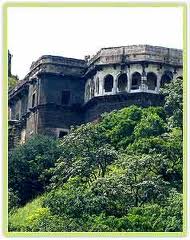

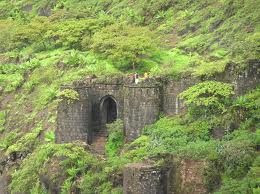

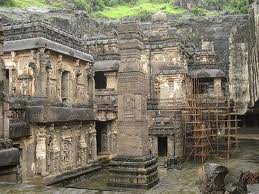
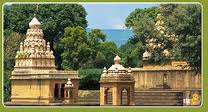
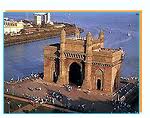
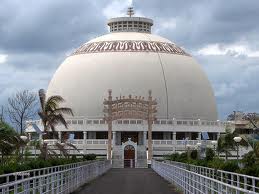









Wild Life Parks